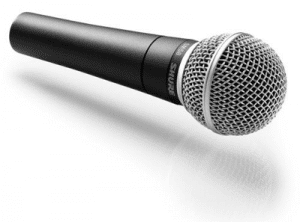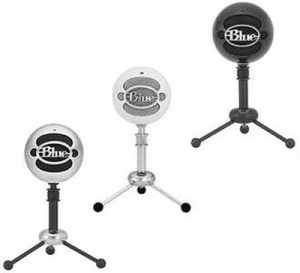Home Recording Academy: Choosing the Best Microphone for Home Studios
When building a home recording studio, one of the most important decisions you’ll have to make is what kind of microphones you will add to your studio. Whether you’re recording in a small corner of one room in your house or converting your entire basement into a professional recording area, the microphones you choose will play a very large role in determining the sound of your space.
When it comes to choosing a studio microphone, the choices can seem overwhelming. From the different types of microphones to the different prices of each type, knowing what to choose can be a daunting task. But a basic understanding of the types of microphones available for a home recording studio is a great way to get started on the way to choosing the best mics for your studio.
There are two basic types of microphones you can choose from, a condenser microphone and a dynamic mic. Here we’ll look at the differences between the two, and which will work best for you studio, as well as why you should have both kinds if possible. Finally, we’ll also look at the properties of a USB microphone, which has become a standard of simple at home recording.
Condenser Microphone
A condenser microphone is generally going to have greater frequency response than a dynamic mic, and will therefore produce a more “accurate” sound for many audio sources. However, these mics have the downside of being more fragile and susceptible to distortion than their dynamic counterparts.

Because of this they are better for recording low volume audio sources, such as vocals and acoustic instruments. They are also much more adept than dynamic mics at recording a source from a distance of more than a few inches.
There are two types of condenser microphones: large diaphragm and small diaphragm
- A large diaphragm condenser microphone will generally produce “warm” recorded sounds and is great for vocals and other instruments that need a solid low end. Famous examples of the large diaphragm condenser microphones are the AKG 414 and the Neumann U87, both of which we make use of here at the Sage Audio recording and audio mastering studio.
- A small diaphragm condenser mic delivers a wider and more even frequency response, and is therefore often used for recording sources at a distance. For instance, these microphones are often use as drum overhead mics.
Dynamic Microphone
Dynamic microphones are most often used in live concert settings because of their durability and relative inexpensiveness. However, these same

qualities make them great for studio use as well, particularly for loud sources like guitar amps and drums.
Of course they also are often used to record vocals. When it comes down to choosing the best microphone for a home recording studio, the choice often comes down to the best sounding microphone for your purposes that also fits into your budget. More than likely, purchasing microphones won’t be a one-time deal, and you’ll continually make addition to your microphone lineup for years to come.
USB Microphone
Lastly, a new kind of microphone has popped up in recent years, the USB microphone. Though these mics can be found in both condenser and dynamic forms, the difference is that they plug directly into your computer’s USB port rather than a typical XLR input.

USB microphones first became popular for podcasts, but some also use them for recording things like acoustic guitars and vocals at home without the need for an audio interface. The sound quality of these mics will not be as good as a dynamic mic or condenser microphone run through a preamp, but it can be great for those just getting started in home recording.




